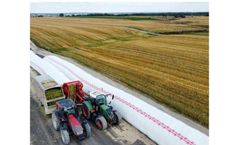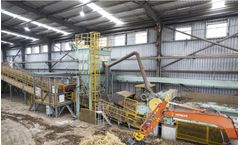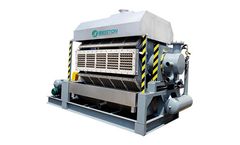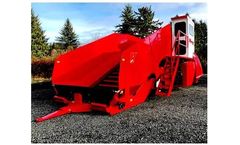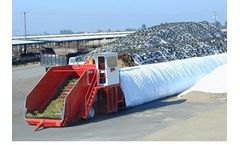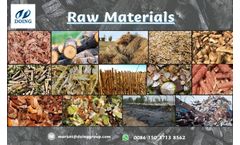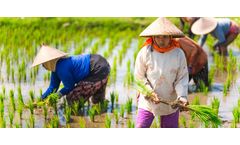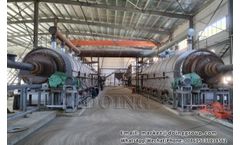Refine by
Corning Articles & Analysis
452 articles found
In his operation, he typically bags corn silage for 18 months and legume-grass for 15 months before use. ...
This is particularly true for silage, a preserved forage made from energy-rich crops such as corn, alfalfa, sorghum, or grass that undergo fermentation under anaerobic conditions. ...
For example: a biomass gasification to methanol project in Heilongjiang uses various types of straws such as corn, wheat, and rice as raw materials. Through Srid's fine processing technologies such as crushing, magnetic separation, and drum screening, various types of straws are processed. ...
By utilizing materials such as agricultural byproducts, such as rice husks or corn stalks, egg tray machines will help manufacturers reduce waste from farming processes and lower material costs. ...
Treatment: Yield Check: 186 Bu AgZyme® with Ag Concepts® Super Hume®: 202 Bu Summary: Yield increase of 16 Bu/Acre with AgZyme® and Ag Concepts® Super Hume® Application: Ag Concepts® Super Hume® at a rate of 1 gallon per Acre and AgZyme® at a rate of 12.8 ounces per Acre. Both products were applied in furrow at planting with a liquid starter. All ...
Treatment: Yield Check: 197 Bu AgZyme® with Ag Concepts® Super Hume®: 221 Bu Summary: Yield increase of 25 Bu/Acre with AgZyme® and Ag Concepts® Super Hume® Application: 1 gallon per acre of Ag Concepts® Super Hume® with a liquid starter at planting. 2 quarts of Super Hume and 12.8 ounces of AgZyme® with a liquid starter at planting. The starter was ...
Cattlemen are increasingly turning to bagged silage for flexible feed management. The most fundamental beef cow feeding strategy remains the use of pasture, which is considered the lowest-cost feed resource. Therefore, many cattle operations aim to maximize pasture time annually to benefit from labor, manure management, physical activity, and nutrition advantages. ...
So what’s to know about the differences of silage storage in bags as opposed to piles, bunkers, trenches or dry hay? Plenty! Bagging Silage has been proven to be more cost-effective as well as providing better herd health. Milk production is increased with Dairy Cows and increased weight gain with Beef Cattle. ...
However, dairy farmers are increasingly turning to high moisture corn silage, specifically snap I age/earl age, due to its high energy content and easy digestibility. ...
Common types of agricultural waste suitable for charcoal production include: Agricultural waste ● Crop Residues: Rice straw, corn stalks, wheat straw, and sugarcane bagasse. ● Wood Chips and Sawdust: From pruning, logging, and woodworking operations. ● Nutshells: Coconut shells, almond shells, and walnut shells. ...
Waste Management and Circular Economy Using agricultural waste to make biochar presents a sustainable solution to managing biomass waste, transforming it into a valuable product rather than allowing it to accumulate or decay. Waste from crops like rice, corn, and sugarcane can be converted into biochar, turning what would otherwise be waste into an asset. ...
Crop Versatility: Pyroxasulfone is applicable in various cropping systems, including cereals, soybeans, corn, and legumes. Its versatility enhances its utility, allowing farmers to integrate it into diverse crop rotations without compromising efficacy. ...
The latest analysis from the World Resources Institute (WRI) shows that a quarter of the world’s crops are grown in areas where water supply is highly stressed, unstable, or both. In fact, rice, wheat, and corn, which provide more than half of the world’s food calories, are particularly vulnerable: 33% of these three staple crops are produced using highly stressed ...
In recent years, corn cob charcoal making technology has become popular. After carbonization, corn cobs are converted into a high-quality biomass carbon. ...
She demonstrated that genes on chromosomes can change their place during the early development of a young plant – the growth of a kernel on a corn cob! This phenomenon, highlighted by a change in pigmentation of the kernel, is referred to as transpositions. ...
Crop Versatility: Pyroxasulfone is applicable in various cropping systems, including cereals, soybeans, corn, and legumes. Its versatility enhances its utility, allowing farmers to integrate it into diverse crop rotations without compromising efficacy. ...
It can also be used for cutting fibrous stalk-like materials such as bamboo, straw, mushrooms, garden branches, corn cobs, etc. Cut into pieces. It is a new type of wood crushing production equipment. ...
Preserving power of some additives against fungal invasion and mycotoxin production in stored-crushed-corn containing different levels of moisture. Acta Phytopathologica Academca Scientiarum Hungaricae, 20: 309 – 320. ...
In 2011, they announced a breakthrough: corn genetically modified to produce an RNAi that targets the western corn rootworm. This pest costs American farmers over $1 billion annually in damages and control measures. The RNAi-produced corn could resist the rootworm without the need for insecticides, reducing economic losses and environmental ...
For example, Bt cotton, which has been genetically modified to produce Bt toxins, has been widely adopted in many countries and has proven to be highly effective in controlling bollworms and other pests. Similarly, Bt corn has been developed to target corn borers, a major pest in corn production. ...


